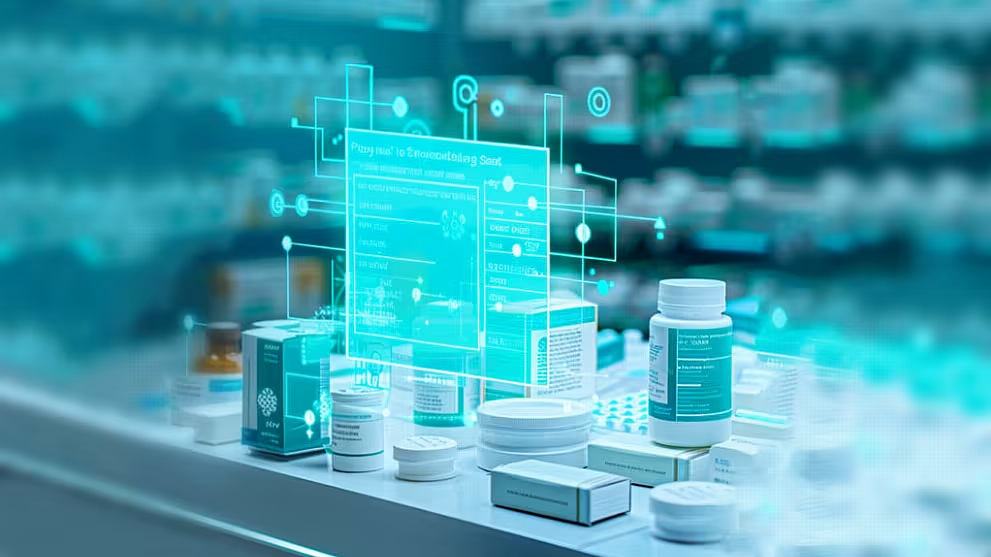For the pharmaceutical industry, just as for traditional retail, the correct display of goods, the location of POS materials, and the availability of all items in merchandise display are crucial.
Retailers have long used computer vision technology to monitor product displays, and pharmaceutical companies are already starting to adopt these practices.
The global Computer Vision in the healthcare market is expected to grow from $262.2 million in 2019 to reach $2.4 billion by 2026.
Adopting computer vision will allow pharmaceutical companies to improve performance and reduce costs.
According to McKinsey, the implementation of AI increases the value of companies by up to 5%. Therefore, pharmaceutical retailers today need to use business intelligence systems and manage merchandising using artificial intelligence.
Together with Alex Sutsko, Development Manager at IT-company, IBA Group, we will gain insight into AI implementation in the European pharmaceutical industry.

Computer Vision Checks The Display Of Goods In Pharmacies
Automation helps companies enhance the quality and reliability of production processes, meet stringent legal requirements, improve marketing strategies and personalise advertising. Let's see how it works in real-world contexts.
Merchandising in pharmacies addresses several business challenges: draw customers and promote up-sells. For example, a customer came to buy nose drops, and at the same time bought paper tissues, that were 'accidentally' seen on the counter.
That is why marketers pay great attention to the product mix and proper display of goods in order to increase the average bill, and accordingly, drive sales throughout the pharmacy chain.
Proper display of goods also prevents problems with suppliers. After all, a display case is, first of all, a place for storing drugs, where the correct storage conditions for drugs should be observed.
Therefore, each product must be in its designated place. The general impression of customers about the pharmacy also depends on proper display, since clutter on the shelves reduces trust in it, and therefore sales.
Automation in the pharmacy helps monitor the display, improve it, and boost sales. For example, the Goods Checker IT solution powered by computer vision already automates this monitoring of goods display in several countries.
The service provides support to medical representatives in checking compliance of layout with the planogram, the correct location of price labels and POS materials.
Doing all this manually is very difficult. Inattention, different planograms for each pharmacy, seasonality and other factors complicate the process of checking the display.
Therefore, when checking the display, dozens of medical representatives make inaccuracies in the reports on retail outlets. Managers, in turn, do not have time to process all reports in time and generate analytics with the required breakdowns.
All this leads to inaccurate, incomplete and irrelevant information reaching managers. This makes it difficult to understand the actual situation on the shelves and fairly evaluate the performance of employees.
The introduction of computer vision will change the situation for the better. Using the Goods Checker application, medical representatives only need to take a photo of the display; the application itself will process the image and identify missing or incorrectly displayed SKUs and POS materials. After processing the photo, the application will send the required data to the BI system in real-time.
This means that managers will obtain detailed analytics with important KPIs, such as the brand's share of the shelf and the reasons for non-compliance with the planogram.
This helps to avoid out-of-stock situations and improve assortment management. Managers will be able to make adequate management decisions based on complete and reliable real-time data.
Therefore, the experience of implementing such IT solutions should be extensively adopted by pharmaceutical companies.

Automation: The Foundation For A Successful Future
Pharmaceutical companies should implement IT solutions into their business processes more intensively since automation is an essential step towards improved efficiency, lower costs, and better quality of services.
According to a study by Statista, which involved more than 2,000 executives from 16 countries, the implementation of IT solutions improves business performance. Thus, more than 60% of respondents said that over the past two years, the use of AI, automation and analytics has improved performance and increased profits of their companies.
Cutting-edge technologies help improve and speed up processes, prevent errors, and meet stringent regulatory requirements. In recent years, technology adoption has become easier and faster thanks to the development of cloud solutions and industry-standard platforms, which significantly reduces the time and cost of their integration.
It has become easier to implement AI in the pharmaceutical industry, as evidenced by the successful cases of many companies.
Today, technologies are vital; they provide competitive advantages to businesses and strengthen the company’s presence.
Therefore, the pharmaceutical industry must keep up with the times by investing in advanced IT solutions.
This article was written in partnership with IBA Group.














